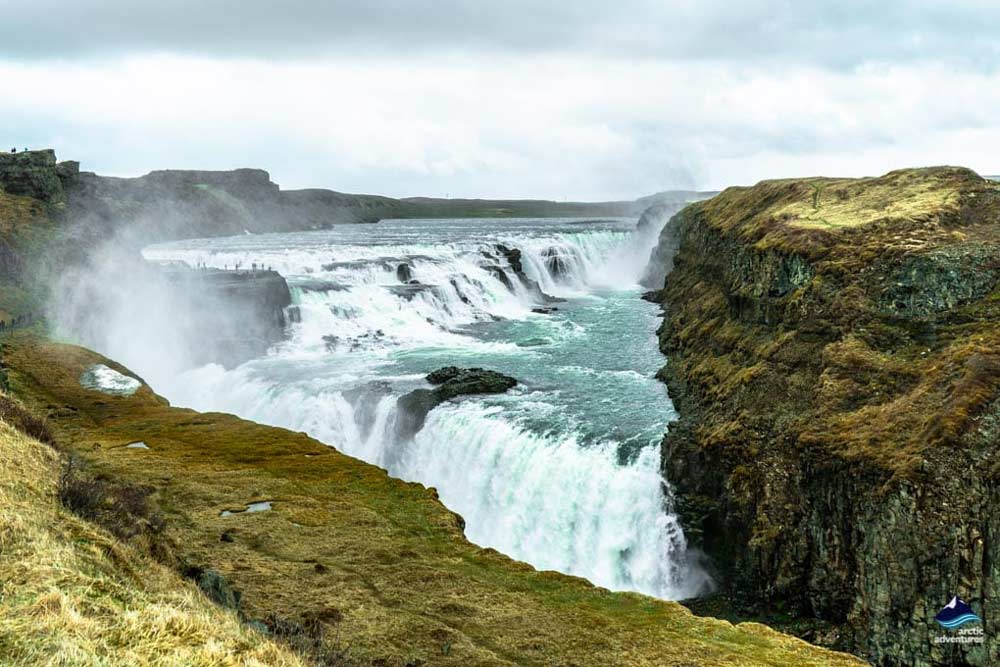

Gullfoss is one of the main attractions in Iceland and gives its name to the Golden Circle.
Gullfoss and its environments were designed in 1979 as a nature reserve. This served to permanently protect the waterfall and allow the public to enjoy this unique area. The Environment Agency of Iceland is responsible for the management of this reserve.
The origin of its name:
Gullfoss gets it’s name from the golden hue that often shines in its glacial waters.
Another assumption is that the name was inspired by the rainbow you often see when the sun hits the water spray that is thrown up by the waterfall.
The name can also be found in a travel journal by Sveinn Pálsson. “Once upon a time, a farmer named Gýgur lived at Gýgjarhóll. He had plenty of gold and could not bear the thought of someone else possessing it after his lifetime. To prevent this, he placed the gold in a coffer and threw it into the waterfall.” Which has ever since has been named Gullfoss.
How was Gullfoss formed?
Well the gorge was formed by flash flood waters that forced their way through the cracks in the basalt lava layers. On average the water flow is around 110 m3/s. But when these floods happen it can go up to 2000 m3/s, this means that it can fill almost 50 Olympic pools in one minute or about one every second. The floods were so intense that they could fill up the gorge, which is an impressive 32 meters tall, up to the top.
Gullfoss is a tiered Cataract, its total height is 32 m. It has two falls, of which the longest drop is 21 meters tall. It is in the Hvitá River in the Southwestern part of Iceland
Sigriður and her Struggle to Protect Gullfoss:
Sigriðus is an important figure for the myth surrounding the waterfall. She was born 24th of February 1871 and she died ain the Autumn of 1957, aged 87. She lived all her live in Brattholt, a farm that still exists today, and was the second eldest of 13 children born from Margrét Pórðardóttir, a housewife and Tómas Tómasson, a farmer on that same farm.
Only seven of these children made it to adulthood, and Sigriður came to be their leader, since her older sister and only brother left the farm at an early age. Sigriður was thought by her siblings to be rather strict.
Tourism of this amazing waterfall has been dated to as far back as 1875, and its access was rather difficult. Sigriður and her sisters would often guide the visitors all the way up to the waterfall, they built the first trail that led down to the waterfall.
When speculated that Gullfoss was going to be rented by some investors to generate electricity she was not happy, and took them to court, even threatening to throw herself in the river. Fortunately, the investors failed to pay for the rental and eventually the property was recovered and sold to the Icelandic Government in order to protect it as we know it today.

